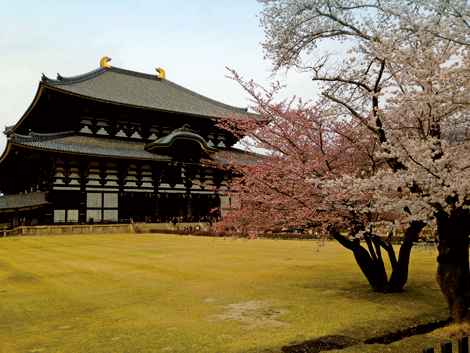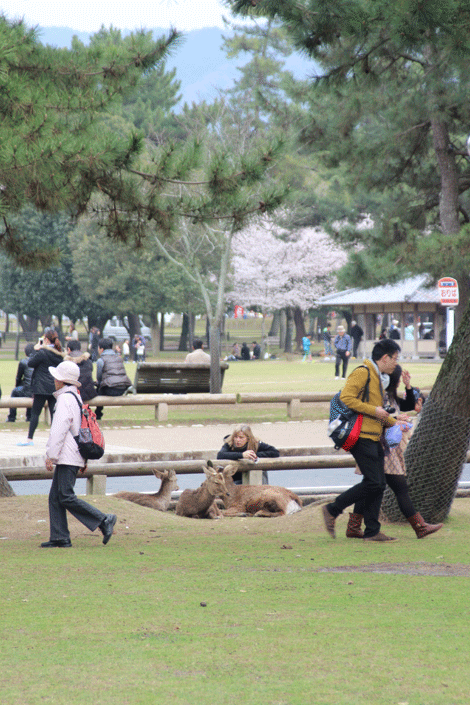
There are two Japans: there’s the futuristic, hip and buzzing Tokyo-style version, and then there’s the ancient one dotted with temples, tea shops and zen gardens.
Every spring a magical two-week window allows the old Japan to steal the limelight from its younger, neon-lit counterpart. In late March and early April, the country erupts in a wave of fluffy pink hues as cherry blossoms engulf wintry, leafless tree branches – a sensory explosion best showcased in quiet, subdued surroundings.

Nara is in the south of Honshu Island, about an hour’s train ride on the Kintetsu line from Osaka, which has an international airport. The train costs ¥540 (US$5.50) and delivers you to Nara Station – the starting point of your wander through Japan’s ancient capital.
Nara, which now more closely resembles a town, was the epicentre of Japan’s ruling elite between 710 and 784, after which the capital moved to neighbouring Kyoto. A number of interesting old buildings remain from this time: five temples, a shrine, a palace and a primeval forest together comprise the Unesco World Heritage Site Historic Monuments of Ancient Nara. All are within easy walking distance of one another, and are heavily adorned with Japan’s famous pink blooms when in season.
An added attraction is the over 1,000-strong population of wild (but relatively tame) deer that freely roam the temple grounds, town and Nara Park. They are viewed as heavenly beings and have been allowed to thrive, since legend has it the god Takemikazuchi-no-mikoto came to Nara riding a white deer. These graceful creatures are unperturbed by humans, and vendors sell shika sembei, or deer biscuits, for people to feed them.
Stepping off the platform at Nara Station, simply walk straight ahead along a boulevard lined with quaint little shops, where Japanese pastries and sweets are made in the (rather vocal) traditional way, and cyclists roll leisurely by. At the end you arrive at the placid Sarusawa-ike Pond; turn right for a stroll down the lanes of the old town and discover residences and tea shops that appear not to have changed for centuries, then turn left towards the Five Storied Pagoda to get to the temple grounds.
The pagoda – the second-tallest in Japan at 50.1 metres high – is the first of many impressive old structures in the area, including Kofukuji Temple and Tokondo Hall. The pagoda was originally constructed by Empress Komyo in 730 and was last restored in 1426.
Walking straight on takes you through to Nara Park – where herds of deer can be seen relaxing under their own pink petal pagodas, and posing patiently for photos with passers-by.

Wander through Nara Park for a while and you reach a roundabout, around which there are a few restaurants and refreshment stops. If you take a left here down to Nandaimon Gate, you eventually come to Todai-ji Temple.
Stepping through the colossal gate gives you a taste of what’s to come. The oversized wooden structure echoes the design of the temple – which at two-thirds its original size is still one of the largest wooden structures in the world. An entry ticket is ¥500 (US$5), admitting you to the ancient site and its manicured gardens, where a huge temple was first built in 728 and has since burnt down twice. The current building, finished in 1709, houses a 16-metre bronze statue of the Buddha Vairocana. The statue has been in the same spot since 745, and sits serenely among the immensely high wood ceilings of the surrounding hall – a perfect reflection of Nara itself, which steeps the soul in both history and nature.








